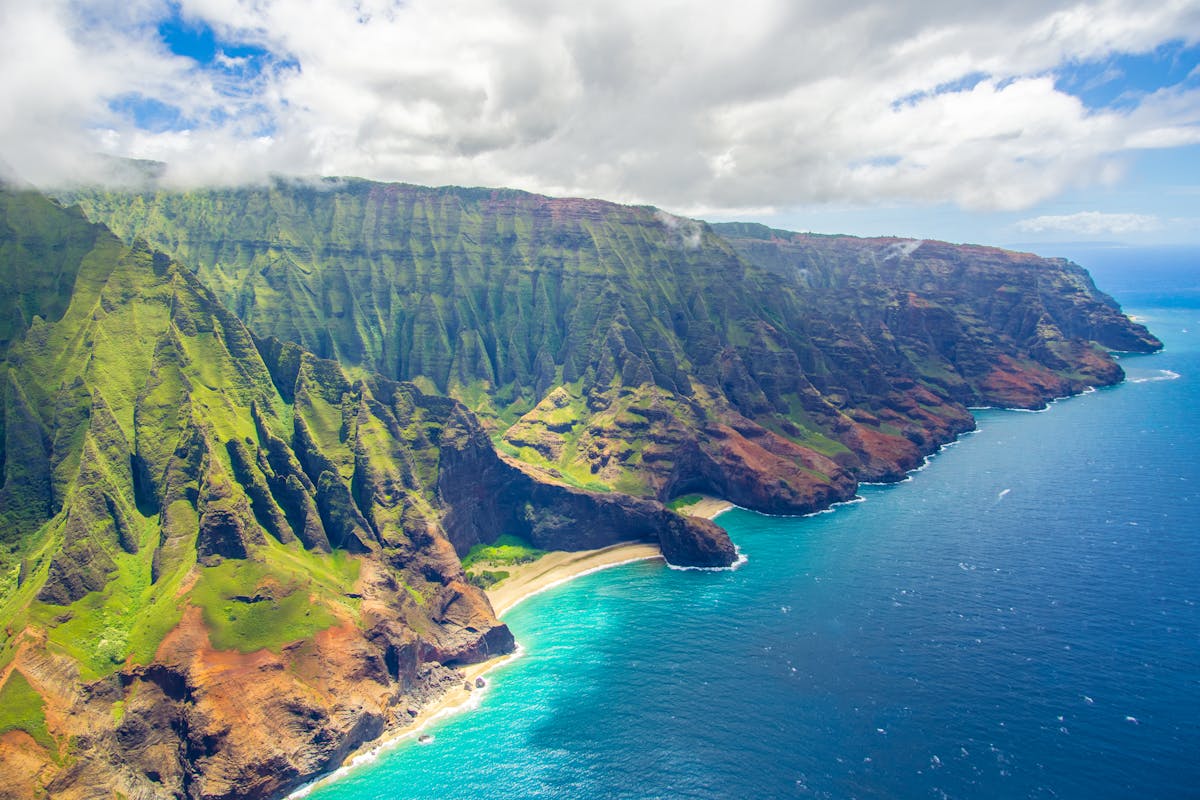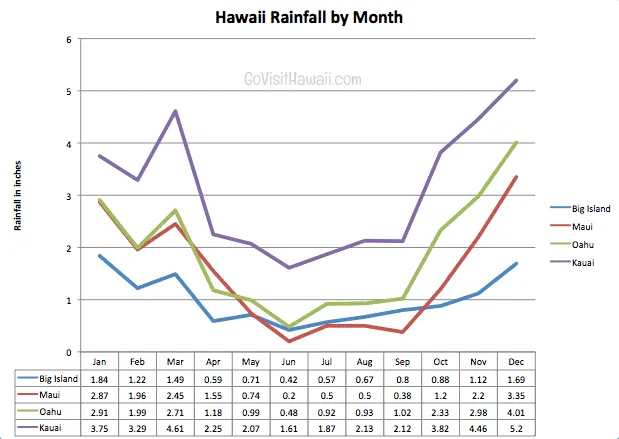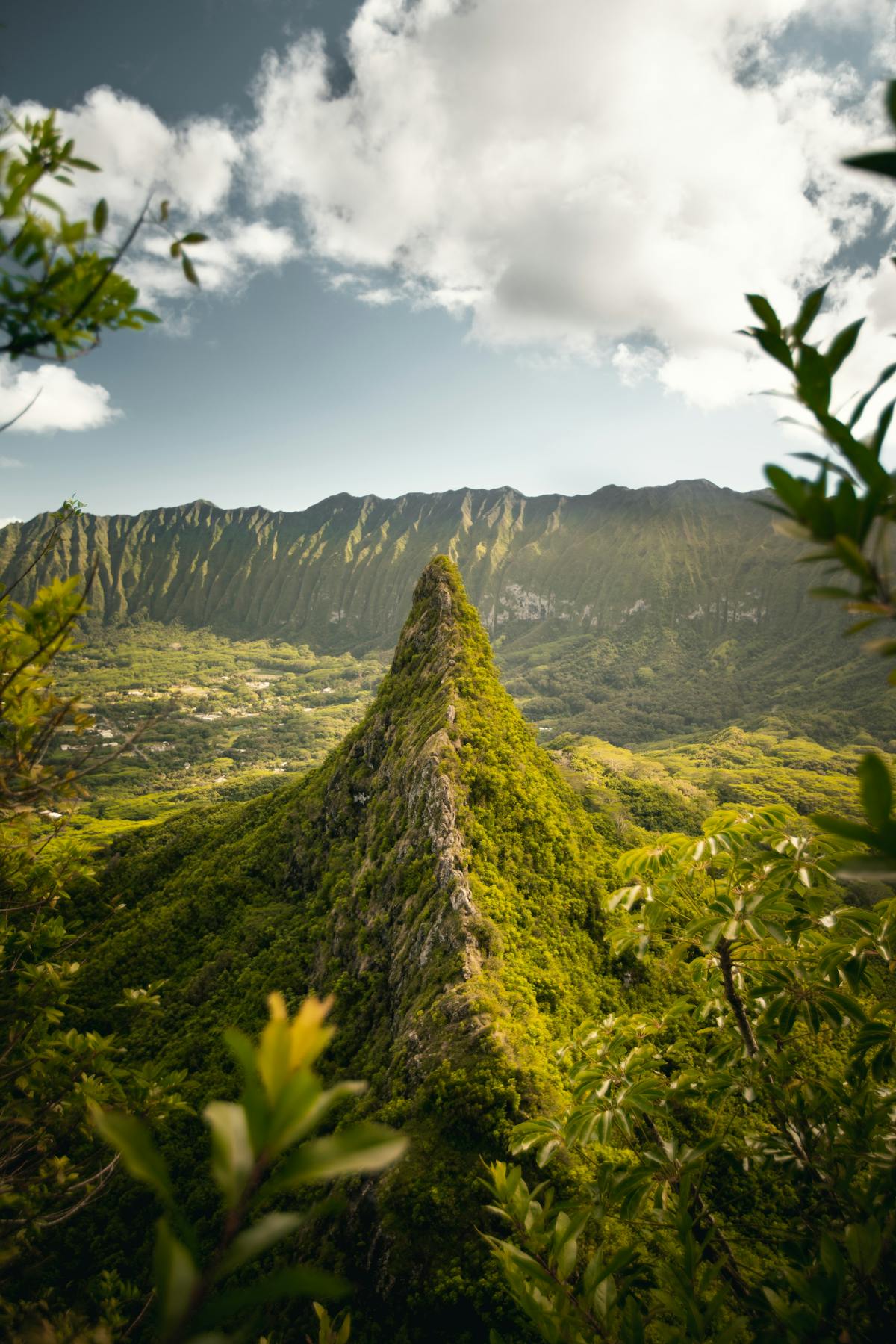Planning a trip to the islands often brings dreams of endless sunshine and perfect beach days. While Hawaii boasts incredible weather year-round, understanding the seasonal variations, particularly the Rainy Months In Hawaii, is key to setting realistic expectations and maximizing your tropical getaway. As a seasoned traveler and content creator, I’ve explored these islands during all seasons, and I can tell you that even with increased rainfall, the magic of Aloha remains vibrant.
The concept of “rainy season” in Hawaii differs significantly from many other destinations. It’s not typically weeks of relentless downpours. Instead, you’re more likely to encounter intermittent tropical showers, often referred to by locals as “liquid sunshine.” These can be intense for a short period, then the sun reappears, sometimes creating stunning rainbows. However, knowing when and where rain is more probable allows for better planning and flexibility during your trip.
Understanding Hawaii’s Rainy Season
Hawaii’s climate is generally divided into two main seasons: the dry season (roughly May to October) and the wet season (roughly November to April). The Rainy Months In Hawaii fall within this wet season, with December and January typically seeing the highest average rainfall across the islands. It’s important to remember that these are averages, and weather can vary greatly year to year and even day to day.

Rainfall is influenced by the trade winds and the islands’ volcanic topography. The northeast (windward) sides of the islands, which face the incoming trade winds, receive significantly more rain than the southwest (leeward) sides, which are sheltered by the mountains. This means that even on a single island, you can often find sunny conditions on one coast while it’s raining on the other. This microclimate effect is one of the fascinating aspects of Hawaii’s weather.
Average Rainfall Trends During the Rainy Months
Analyzing historical rainfall data provides valuable insights into what to expect during the Rainy Months In Hawaii. While total inches vary by location (as the original chart alluded to, using airport data as a baseline), the general trend holds true across the main islands.

Chart showing average rainfall during rainy months in Hawaii by island.
December generally sees the highest rainfall across the board. Following December, January and February also tend to be wetter than the summer months. Interestingly, data shows a slight uptick in rainfall from February to March, which might seem counterintuitive as the wet season supposedly tapers off. This could be attributed to various weather patterns, though it’s a less pronounced peak than the December numbers.
Rainfall Variations Across the Main Hawaiian Islands
While all islands experience increased rain during the wet season, the amount and character of the rain can differ. Understanding these nuances is vital when considering the Rainy Months In Hawaii for your travel dates.
Oahu, with its major population center in Honolulu and Waikiki, sees moderate rainfall concentrated on the windward side (like Kaneohe) and mountain areas. Waikiki itself is relatively drier than other parts of the island, though it still receives more rain during the wet season than the dry season. The North Shore’s rainfall varies, but generally sees more than Honolulu.
Maui’s main tourist areas like Wailea, Lahaina, and Kaanapali on the leeward side are drier compared to the windward side near Hana. The airport area in Kahului, used for some data collection, is somewhere in between. Visiting Hana in the rainy months guarantees incredibly lush landscapes and powerful waterfalls, but you must be prepared for significant rain.
Discover the Best of What to Do in Downtown Denver – Your Ultimate Guide
Discover the Best Brunch in Denver – A Local’s Guide
Top 10 Places to Visit in Nevada with Family for an Epic Trip
Kauai, known as the “Garden Isle,” is inherently lush due to its high rainfall. The rainiest spots in the world are located in its mountainous interior. During the Rainy Months In Hawaii, both the North Shore (Princeville, Hanalei) and the South Shore (Poipu) see increased rain compared to summer, though the South Shore remains considerably drier than the North.
The Big Island presents the most dramatic contrast. Hilo, on the windward side, is one of the wettest cities in the United States. Kona, on the leeward side, is famously sunny and dry. Therefore, while the Big Island experiences its wet season, where you stay makes a massive difference. Hilo will be very wet, while Kona might experience only brief, light showers.
Pros and Cons of Visiting During the Rainy Months
Visiting during the Rainy Months In Hawaii isn’t without its advantages and disadvantages. Weighing these can help you decide if it’s the right time for your trip.
One significant advantage is cost. Airfare and accommodation prices are often lower during the wet season, outside of the peak holiday weeks around Christmas and New Year. There are also typically fewer crowds compared to the summer months, offering a more relaxed and less hurried experience at popular attractions.
The rain also transforms the landscape. Waterfalls swell, rivers flow more strongly, and the greenery becomes incredibly vibrant. This is arguably the most beautiful time to see certain natural wonders, like the waterfalls along the Road to Hana or the lush valleys of Kauai.
However, the main disadvantage is, of course, the rain itself. While often brief, persistent rain can disrupt outdoor activities like hiking, sunbathing, or certain water sports. Visibility can be reduced in mountainous areas, and flash flood warnings are possible, especially in low-lying or stream-adjacent areas.
Making the Most of Your Trip During the Rainy Months
Even during the Rainy Months In Hawaii, a fantastic vacation is absolutely possible. It just requires a bit more flexibility and preparedness.
Pack appropriately. Lightweight, quick-drying clothing is essential. Bring a waterproof jacket or poncho and waterproof bags for electronics. Don’t forget sturdy, water-resistant footwear if you plan on hiking.
Be flexible with your plans. Check the local weather forecasts daily, keeping in mind the microclimates. If it’s raining heavily on one side of the island, hop in the car and drive to the other – there’s a good chance it’s sunny there!

Embrace indoor and rain-friendly activities. Explore museums (like the Bishop Museum in Honolulu or the Pacific Tsunami Museum in Hilo), aquariums (Maui Ocean Center), art galleries, shopping centers, and historical sites. Take a cooking class, visit a local brewery or distillery, or enjoy a long, leisurely meal trying out local cuisine.
Chase waterfalls. Rainy weather means waterfalls are often at their most spectacular. Just be cautious about flash flood risks and heed any warnings or trail closures. Similarly, watching the dramatic waves on the North Shores (Oahu, Maui, Kauai) during the winter swell season (which coincides with the wet season) is a thrilling experience, though always observe from a safe distance.
Consider islands or areas that are naturally drier. If avoiding rain is a top priority, basing yourself on the leeward side of an island (like Kona on the Big Island, Poipu on Kauai, or South Maui/Wailea) increases your chances of dry weather, even during the wet season.
Is Visiting During the Rainy Months In Hawaii Right for You?
Deciding when to visit Hawaii depends on your priorities. If your dream trip involves guaranteed wall-to-wall sunshine for tanning and beach-lounging every single day, the Rainy Months In Hawaii might pose a higher risk of disappointment, although even in the wet season, plenty of sunny days occur.
However, if you’re looking for potentially lower prices, fewer crowds, vibrant green landscapes, spectacular waterfalls, and are willing to be flexible with your plans and embrace the possibility of occasional showers, visiting during the wet season can be a deeply rewarding experience. It offers a different perspective on the islands’ natural beauty and allows you to enjoy both outdoor adventures during dry spells and cultural/indoor activities when the rain arrives. Hawaii (https://en.wikipedia.org/wiki/Hawaii) is beautiful year-round; the “rainy” season simply adds another layer to its diverse tropical climate.
Frequently Asked Questions About Rainy Months In Hawaii
When are the rainiest months in Hawaii?
The rainiest months in Hawaii are typically December and January, falling within the broader wet season from November to April.
Which Hawaiian island gets the most rain?
While all islands have rainy areas, Kauai is often considered the wettest overall due to its mountainous interior receiving exceptionally high rainfall. However, areas like Hilo on the Big Island also experience very high rainfall.
Does it rain all day during the rainy season in Hawaii?
No, it typically does not rain all day. Rainfall during the Rainy Months In Hawaii often comes in the form of brief, intense tropical showers (“liquid sunshine”) followed by periods of sunshine. Extended, all-day rain is less common, though it can happen.
Are there any islands that are drier during the rainy months?
Yes, the leeward (south and west) sides of the islands are significantly drier than the windward (north and east) sides, even during the wet season. Areas like Kona on the Big Island, Poipu on Kauai, and South Maui are generally drier options.
Is it worth visiting Hawaii during the rainy months?
Yes, absolutely. Visiting during the Rainy Months In Hawaii can mean lower prices, fewer crowds, incredibly lush landscapes, and stunning waterfalls. With flexibility and planning, you can still have a fantastic trip, balancing outdoor activities with indoor and rain-friendly experiences.
